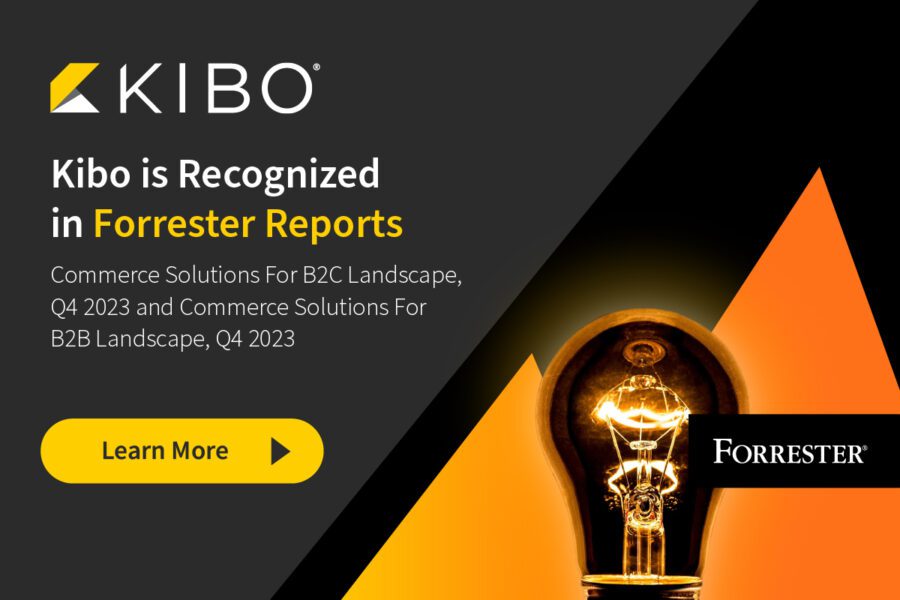The global B2B ecommerce market was worth $6.6 trillion USD in 2020, and is expected to grow by nearly 19% over the next eight years. This is nearly twice the size of the global B2C market, which was valued at just under $3.7 trillion USD last year.
The pandemic accelerated the shift from offline to online purchases for both B2B and B2C retailers, but B2B is outpacing B2C growth by nearly 200%. More robust technologies, a younger buying demographic, and the demand for a range of products from electronics to clothing to books are all contributing to the rapid pace of growth.
Moreover, these changes are likely permanent. In a recent McKinsey study of B2B decision makers, 80% of respondents claimed that the higher reliance on digital channels for B2B purchases is here to stay.
For B2B sellers who want to keep up with increased demand for ecommerce interactions (and the traffic, fulfilment capabilities, and high customer expectations that go along with it), we’ve compiled a list of 14 essential ecommerce platform capabilities.
Before we get into the list, here are a few things to consider about the B2B ecommerce buying environment.
- 2/3 of B2B buyers prefer remote human interactions or digital self-service transactions over in-person meetings.
- Due to COVID-19, many B2B businesses are shifting their go-to-market models to provide more online support and ecommerce capabilities.
- B2B buyers expect personalized and easy-to-use ecommerce experiences that leverage advanced features like augmented reality and video chat.
- Digital-first B2B leaders outperform their peers for key metrics including revenue growth, operating profit growth, and return-to-shareholder growth.
Source: McKinsey
The top 14 B2B Ecommerce Platform Features
A robust end-to-end enterprise commerce platform should address every part of the buying journey, with features that support buyers and sellers alike. Each of the below-listed features is designed to make the B2B buying process easier from the top of the funnel (e.g., search) to the bottom (e.g., order management).
#1: Search & Navigation
Gartner reports that nearly 80% of B2B buyers face challenges when researching or purchasing products online. Complex product catalogs can be difficult to navigate without a knowledgeable sales representative on hand to guide the buyer. But as more and more buyers move their purchasing process online, it’s critical that sellers focus on streamlining their ecommerce offering so that buyers can complete orders quickly and without hand holding. That’s why built-in search and navigation features are critical.
Since so much of the buying process is self-driven, powerful, intuitive search capabilities are needed to ensure that your clients and prospects can find the products they want (and have a good experience while they’re shopping).
Feature-rich search capabilities to look for include full-text search, hit highlighting, faceted navigation, and biasing rules to help customers refine their search based on specific needs. Personalizing search features and results based on customer preferences and inventory levels can encourage up-sells and cross-sells, ultimately driving more revenue.
#2: Product Recommendations
Speaking of personalization, Forrester reports that over 70% of B2B buyers want personalized experiences. Buyers expect (even demand) personalized product recommendations and content experiences, but the same Forrester study revealed that only 22% of B2B buyers said their most recent online B2B buying experience was completely personalized.
Personalized product recommendations go hand in hand with powerful search and navigation features. Both make the buying process easier and are part of delivering an exceptional ecommerce experience.
Centralizing product data in a single location (rather than outsourcing to additional vendors), enables you to leverage machine learning for customized product recommendations tied to inventory which can be connected at the individual buyer level.
#3: Order Management
While B2B and B2C ecommerce transactions sometimes share the same attributes, B2B buyers often have unique needs, so it’s important to make sure that the cart and checkout process can support them. The ability to handle complex and high-volume purchases, recurring orders, and specific contractual obligations are a few examples of needs specific to B2B buying.
A best-in-class B2B order management solution should include the following features:
- Quick, friction-free ordering that enables customers to manage their account on their own (just as they would with a B2C purchase).
- Omnichannel ordering that enables sales, customer service, and support teams to take orders (and complete sales) however they interact with buyers.
- The ability to provide tailored, efficient buying experiences for each customer which helps ensure repeat business and establish customer loyalty.
A robust B2B order management system ensures that customers can make purchases independently if they want, but also that sales teams can take orders in the field and support teams can access buyer accounts when extra help is needed.
4: Quick Ordering/Reordering
A shopping cart that enables quick, friction-free ordering and reordering is essential for delivering a seamless B2B ecommerce experience. Look for a shopping cart that enables your customers to place orders directly or indirectly (e.g., with sales and support reps), and one that works across channels.
Look for a cart that gives B2B shoppers the ability to quickly restock and place bulk orders by adding multiple SKUs to the cart using product name or product ID. Another great time saving feature is a quick-order function that lets sellers a list of items, making the reordering process even simpler.
Another quick reorder feature to look for is the ability to share order history and lists, so that buyers can easily place an order without recreating the list every time.
#5: Cross-Channel Customer Service
We touched on this feature already, but it bears repeating since it’s critical to the way B2B buyers and sellers interact. Your ecommerce platform must make it easy for you to provide cross-channel customer service.
Yes, customers like to move through the buying process independently, but there are many instances where they will reach out to a sales representative either virtually or in the field. A tool that makes it easy for sales teams to take orders during client visits, at trade shows, and in other “in the field” scenarios is something both customers and sales representatives can appreciate.
To this end, customer support teams should have quick and easy access to buyer accounts and account history so they can help customers with questions, reorders, and buying requests across all channels and touchpoints.
#6: Account-Specific Pricing
B2B payments are often account-driven and complex. Account-specific pricing is a feature that can help sellers manage each individual account appropriately and meet needs of customer-specific terms. Look for a tool that supports segmented pricing across your customer base and protects pricing information with user authentication.
Other important pricing features include pre-integrated payment gateways and PCI compliant credit card storage, enabling sellers to provide flexible payment options to customers.
It should also be easy for customers to download invoices, check order status, and manage multiple payment and/or shipping options from one central location.
#7: Price List Management
Price list management allows sellers to create price lists for broad price groups and define pricing based on various criteria such as customer segments, order volume, and location.
#8: Quotes
The ability to provide account-level quotes is an important B2B ecommerce platform feature. Look for a platform that enables buyers to initiate quotes and provides the information they need to make their purchase with minimal interaction from your sales or support teams. Flexibility is key. A quote feature should allow users to configure quoting workflows and manage the quoting process for both authenticated and unauthenticated users.
#9: Flexible Payment Options
Flexible payment options allow for account-specific pricing and price plans which can strengthen your relationship to individual buyers and drive sales. The platform should allow you to easily set and manage payment terms and credit limits at the account or customer level and one support large purchase orders and payments. How large?
When McKinsey asked over 3200 B2B decision makers how much they’d be willing to spend on a purchase using only digital end-to-end self-service and remote human interactions, 32% said $50K to $500K, and 17% said $500K to over $1M.
Large purchases require a platform that allows sellers to easily manage credit limits, allow overdrafts, and save account information to help speed up the checkout process.
#10: Self-Service Accounts
A self-service corporate account feature provides important functionality that enables sellers to create and manage corporate accounts for multiple buyers across an organization. Buyers can then access specific pricing and purchasing options unique to their account and assign user roles to various buying team members within their organization (more on that in a minute).
Self-service accounts empower buying groups to independently manage their buying needs. By providing account and order data in one central location. It’s all about simplifying the purchase process so that complex orders that require multiple decision makers can be completed more quickly.
#11: Flexible User Permissions
According to Gartner, the typical B2B buying group involves an average of six to ten decision makers, all of whom have different roles and priorities in their organization. A B2B ecommerce platform that supports flexible user permissions can facilitate the buying process by allowing multiple customers within a single organization to log in and access shared account information.
User logins are managed centrally through an administration console that assigns account hierarchies and helps define roles and permissions for child accounts.
This shared account approach enables corporate buyers to manage their buying account across multiple contacts where they gain access to B2B specific pricing/purchasing options and can assign roles and permissions to different employees, share information like requisition lists, and review order history.
#12: Site Builder & Content Management
Your website is the heart of your customers’ ecommerce experience, which is why you should make sure that whatever solution you choose includes robust site building and content management functionality.
Focus on features that enable rapid changes with minimal coding skills required. Here are some features we recommend:
- Built-in CMS and CDN tools
- Intuitive import/export features
- WYSIWYG editor
- A single publishing interface for landing pages, promotions, and product pages
- The ability to manage multiple websites from a single console
A powerful website builder gives sellers the ability to easily personalize and adjust the brand experience for different segments, industries, and channels. Ideally, this will be a low or no-code feature that requires minimal-to-no IT involvement.
#13: Advanced Catalog Management
B2B product catalogs can be complex and unwieldy, so an intuitive merchandising and catalog management tool is an essential feature for sellers. An advanced catalog management tool that enables easy uploading and configuring of products from a single platform is a powerful, time-saving feature.
Moving products to the platform is a simple process and, once uploaded, users can create, manage, and update product data wherever it lives (stores, websites, channels, and locations). All of this is done from a single dashboard which makes it easy to manage catalogs, attributes, variables, and restrictions across multiple ecommerce websites.
#14: International Support
International support is a last-but-not-least feature. The global B2B ecommerce market is worth over $6 trillion USD as of 2020 — growing twice as fast as the B2C market.
Today’s rapidly growing global market means that your ecommerce platform should support the expansion of your business across the world by supporting multiple currencies, languages, international tax requirements, and all of the fulfilment nuances needed to expand beyond your own region or territory.
Future proofing B2B ecommerce
Investing in a feature-rich B2B ecommerce platform enables sellers to rapidly scale their business and meet buyers exactly where they are in the buying process (which is, increasingly, online).
At the same time that B2B ecommerce transactions are growing, the way buyers interact with suppliers is changing. Two-thirds of buyers prefer remote human interactions and/or digital self-service options across every stage of the buying cycle. This shift was greatly accelerated during the pandemic, as the following chart from McKinsey demonstrates:
Remote human interactions and digital self-serve transactions increased for every buying job from identifying new suppliers, to considering and evaluating vendors, to ordering and reordering. But ecommerce capabilities must extend beyond digital channels and connect to every single B2B touchpoint that your customers use. Sales and support teams are still a large part of the B2B purchasing process.
That’s why cross-channel customer service and omnichannel ordering options are as important as robust site search and navigation. At the end of the day, it’s all about delivering a seamless, personalized, and flexible experience for your customers. Look for a platform that can grow with you and that addresses the rapidly changing B2B buying journey which is increasingly self-driven, digital, and personalized.




